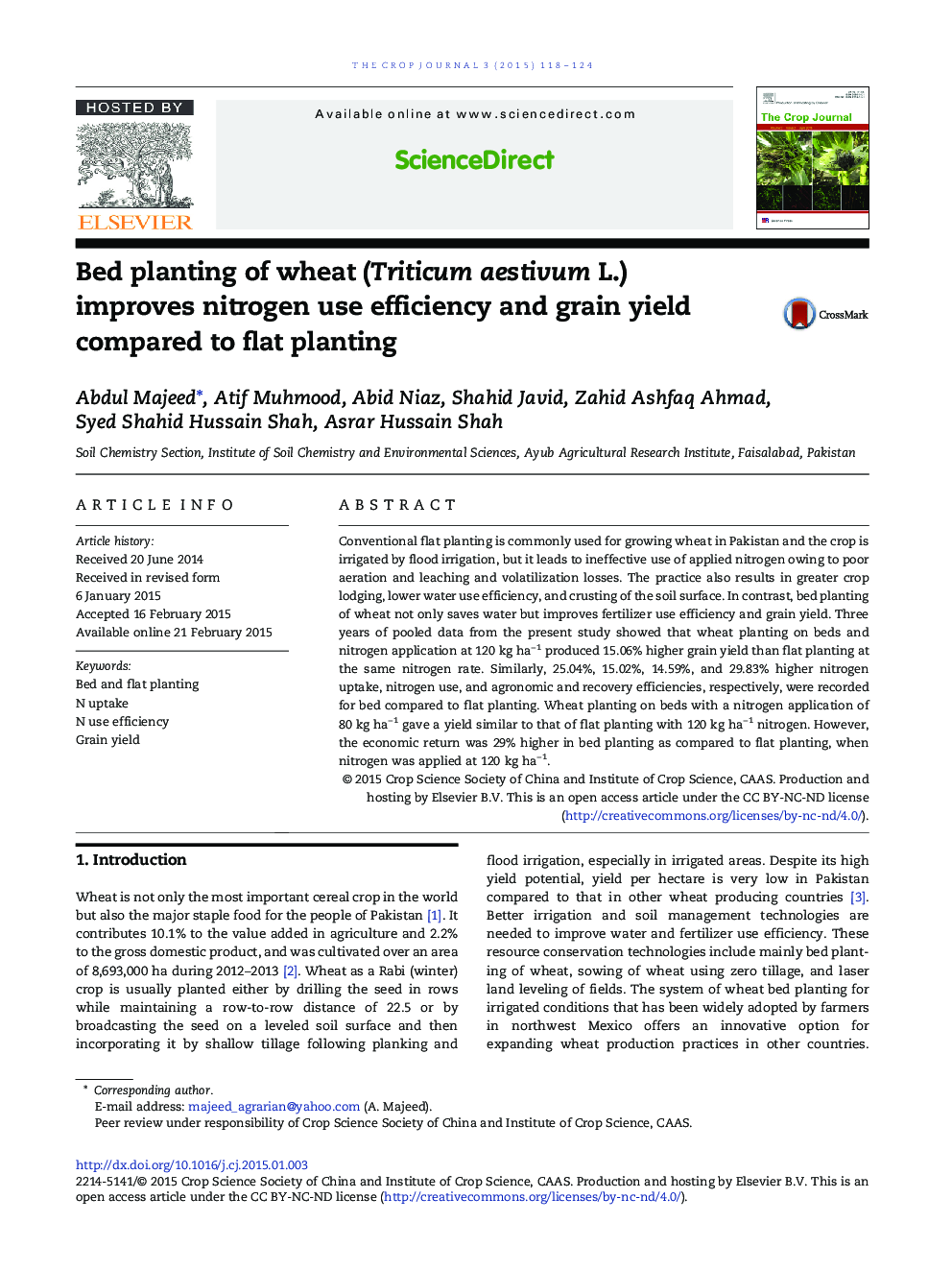| Article ID | Journal | Published Year | Pages | File Type |
|---|---|---|---|---|
| 2079484 | The Crop Journal | 2015 | 7 Pages |
Conventional flat planting is commonly used for growing wheat in Pakistan and the crop is irrigated by flood irrigation, but it leads to ineffective use of applied nitrogen owing to poor aeration and leaching and volatilization losses. The practice also results in greater crop lodging, lower water use efficiency, and crusting of the soil surface. In contrast, bed planting of wheat not only saves water but improves fertilizer use efficiency and grain yield. Three years of pooled data from the present study showed that wheat planting on beds and nitrogen application at 120 kg ha− 1 produced 15.06% higher grain yield than flat planting at the same nitrogen rate. Similarly, 25.04%, 15.02%, 14.59%, and 29.83% higher nitrogen uptake, nitrogen use, and agronomic and recovery efficiencies, respectively, were recorded for bed compared to flat planting. Wheat planting on beds with a nitrogen application of 80 kg ha− 1 gave a yield similar to that of flat planting with 120 kg ha− 1 nitrogen. However, the economic return was 29% higher in bed planting as compared to flat planting, when nitrogen was applied at 120 kg ha− 1.
